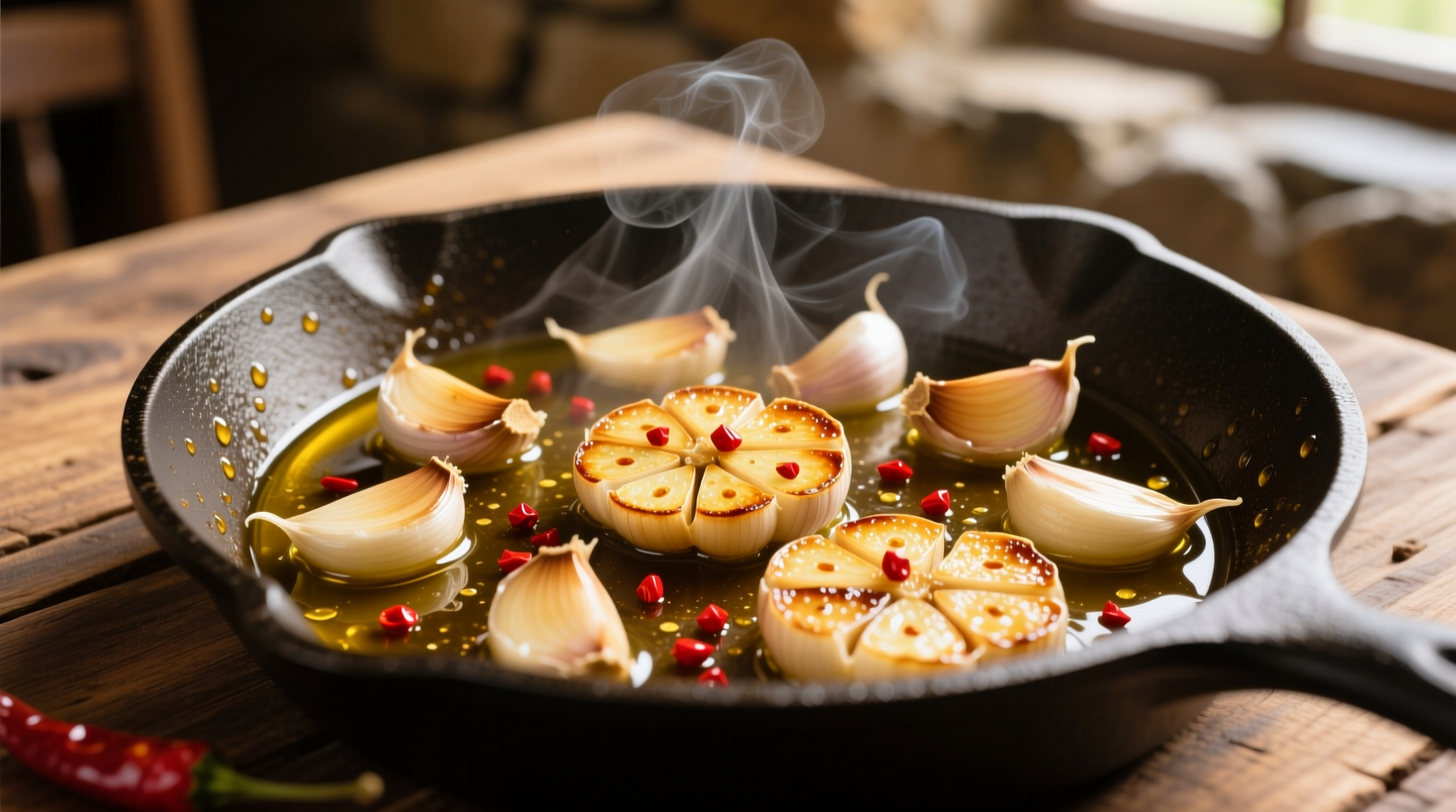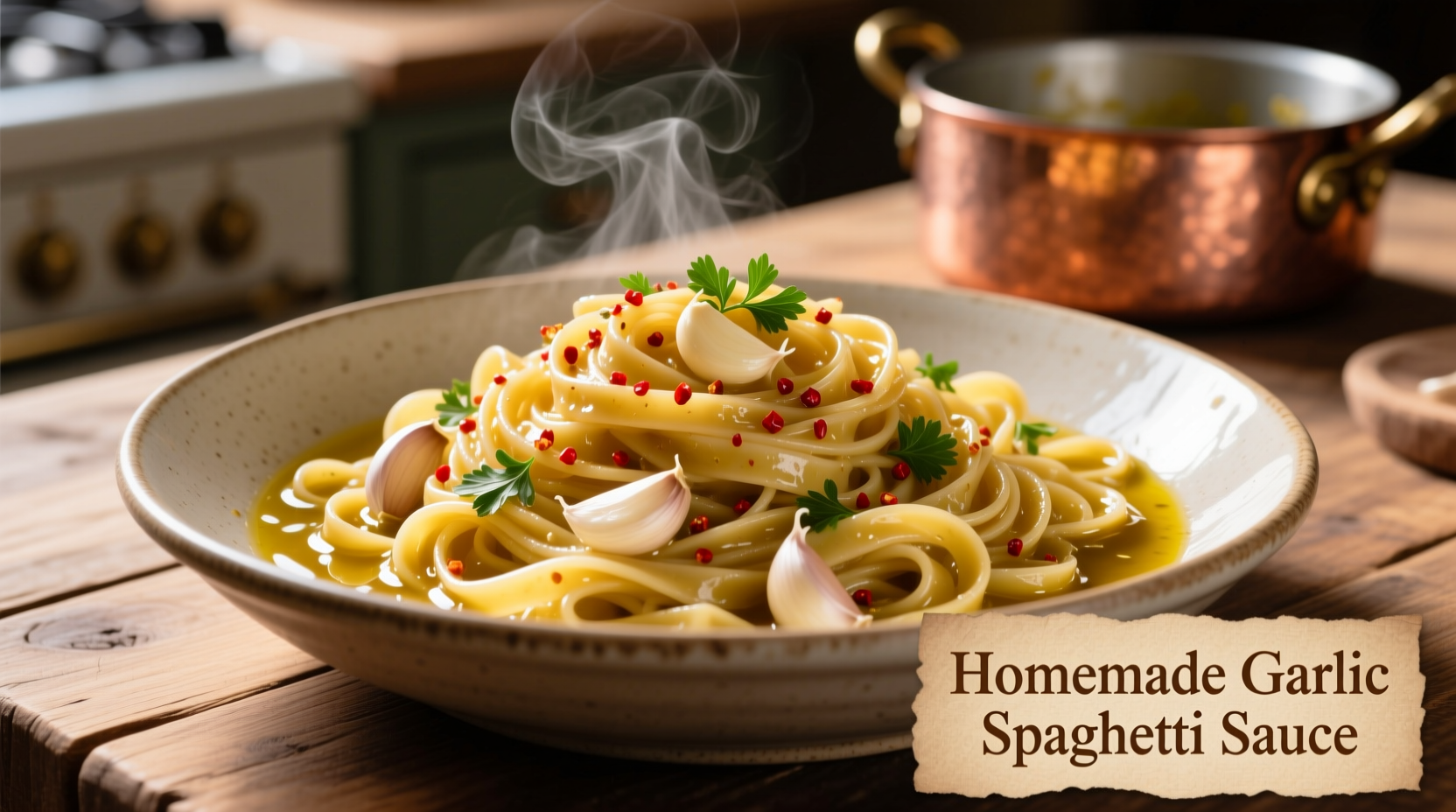Garlic spaghetti sauce, known in Italy as spaghetti aglio e olio, represents one of the most elegant expressions of Italian culinary simplicity. This centuries-old preparation proves that extraordinary flavor emerges from minimal ingredients treated with respect. Forget complicated recipes - the magic happens when you understand how garlic transforms in olive oil.
The Science Behind Perfect Garlic Flavor
Garlic's flavor profile changes dramatically based on preparation method. When raw, garlic contains allicin - the compound responsible for its sharp, pungent bite. But when heated properly, this transforms into dozens of milder, sweeter compounds that create the complex aroma we love in pasta sauces.
| Garlic Preparation | Flavor Result | Best For |
|---|---|---|
| Raw, minced | Sharp, pungent, spicy | Finishing touches, dressings |
| Gently sautéed | Sweet, nutty, aromatic | Classic spaghetti sauce base |
| Browned | Bitter, acrid | Avoid in traditional preparations |
| Slow-roasted | Caramelized, mellow | Specialty variations |
This fact-based understanding comes from research published by the USDA Agricultural Research Service, which has documented how heat application affects garlic's chemical composition. The optimal temperature range for developing desirable flavors in garlic spaghetti sauce is 120-140°C (248-284°F) - hot enough to transform the compounds but not so hot that they burn.
Essential Ingredients Checklist
Authentic garlic spaghetti sauce requires just five components, but each plays a critical role:
- Fresh garlic (4-6 cloves per serving) - Look for firm bulbs with tight skin
- Extra virgin olive oil (⅓ cup) - Choose a medium-intensity oil
- Red pepper flakes (¼-½ tsp) - Adjust to your heat preference
- Fresh parsley (2 tbsp chopped) - Flat-leaf (Italian) variety preferred
- Spaghetti (8 oz dry) - Bronze-die extruded for best sauce adherence
According to culinary historian John Mariani in The Dictionary of Italian Food and Drink, this preparation dates back to at least the 14th century in Naples, where resourceful cooks created flavorful meals from pantry staples. The dish gained wider popularity after World War II when ingredients remained scarce but culinary traditions endured.
Step-by-Step Preparation Guide
Follow these professional techniques for restaurant-quality results at home:
- Prep your garlic - Slice cloves lengthwise into thin slivers (not minced). This creates more surface area while preventing burning.
- Heat oil properly - Warm olive oil over medium-low heat for 2-3 minutes until shimmering but not smoking.
- Cook garlic slowly - Add garlic and red pepper flakes. Cook 5-7 minutes until garlic turns golden (not brown).
- Reserve pasta water - Before draining, save 1 cup of starchy cooking water.
- Finish in the pan - Toss drained spaghetti with sauce, adding pasta water as needed to emulsify.
- Add finishing touches - Remove from heat before adding parsley to preserve its fresh flavor.

Avoid These Common Mistakes
Even experienced cooks make these critical errors that ruin garlic spaghetti sauce:
- Burning the garlic - Once garlic browns, it turns bitter. Maintain gentle heat throughout.
- Using pre-minced garlic - Jarred garlic contains preservatives that alter flavor and texture.
- Adding garlic to hot oil - Always heat oil first, then add garlic to control the cooking process.
- Skipping pasta water - The starchy liquid creates the silky sauce texture that clings to pasta.
- Overcooking the pasta - Cook spaghetti 1 minute less than package directions for perfect al dente texture.
Variations to Elevate Your Sauce
Once you've mastered the classic preparation, try these authentic variations:
- Lemon zest addition - Add 1 tsp lemon zest with the parsley for brightness
- Anchovy enhancement - Melt 1-2 anchovy fillets in the oil before adding garlic
- Caper & olive version - Stir in 2 tbsp each of chopped capers and Kalamata olives
- Seafood adaptation - Toss with sautéed shrimp or clams in the final minute
Food scientist Harold McGee explains in On Food and Cooking that these additions work because they complement garlic's sulfur compounds without overwhelming them. The key is maintaining balance - each element should enhance, not dominate, the garlic's natural flavor profile.
Serving & Pairing Recommendations
For the complete Italian experience, serve your garlic spaghetti sauce with:
- Proper portion size - 85-100g dry pasta per person (not the oversized portions common in America)
- Wine pairing - A crisp Italian white like Vermentino or Greco di Tufo
- Side dish - Simple arugula salad with lemon vinaigrette
- Cheese consideration - Traditional preparation contains no cheese, but Pecorino can be offered
Storage & Reheating Guidelines
While best served fresh, you can store leftovers properly:
- Refrigeration - Store sauce separately from pasta for up to 3 days
- Reheating - Gently warm in pan with splash of water or olive oil
- Freezing - Not recommended as garlic flavor degrades significantly
- Reviving - Add fresh parsley and a squeeze of lemon when reheating
Why This Recipe Works Every Time
The reliability of this garlic spaghetti sauce comes from understanding the context boundaries of each technique. As noted by the Encyclopaedia Britannica in their culinary history section, Italian cooking traditions developed around maximizing flavor from limited ingredients. The precise temperature control for garlic prevents bitterness while developing complex flavors. The starch from pasta water creates an emulsion that transforms simple oil and garlic into a cohesive sauce. These techniques work because they respect the chemical properties of the ingredients rather than fighting them.











 浙公网安备
33010002000092号
浙公网安备
33010002000092号 浙B2-20120091-4
浙B2-20120091-4